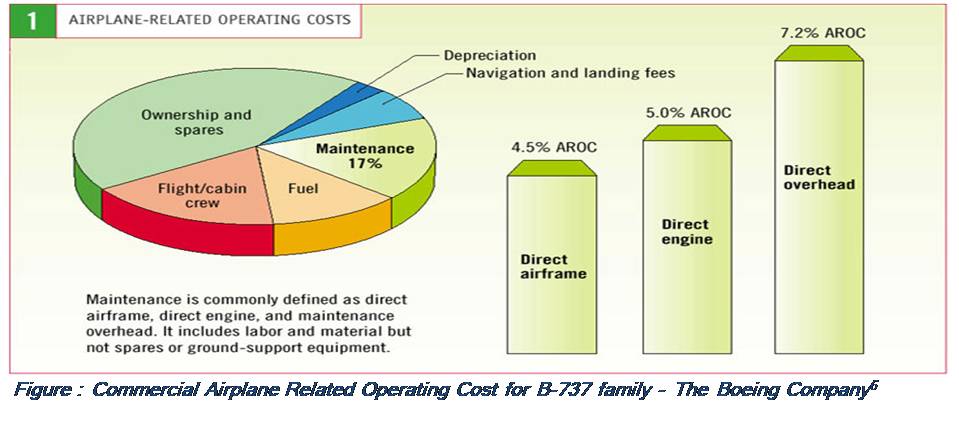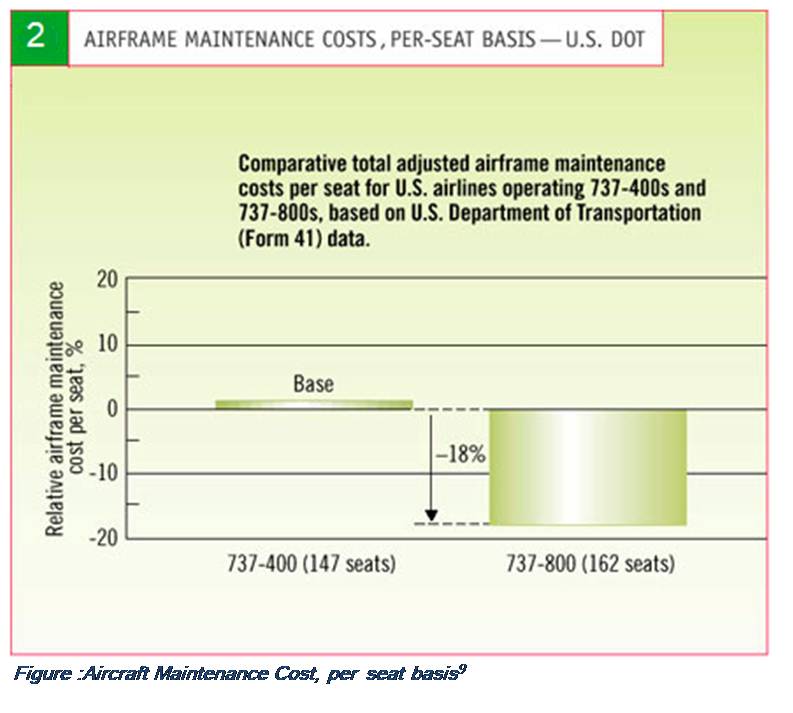- On 16 May 2020, the Ministry of Finance announced the fourth tranche of Centre's ₹20 lakh crore fiscal stimulus1 for India. Unlike previous declarations which had addressed the needs of agriculture sector, urban poor, MSME, etc this session was dedicated to eight new sectors which included Defence Production and Civil Aviation. The Finance Minister stated an ambitious plan to make India a global hub for Aircraft Maintenance, Repair and Overhaul (MRO), with the convergence of Defence and Civil aviation requirements2. Although finer details of the policy changes are still awaited, the directions and intensions of the administration has thrown in the much needed positivity in the civil as well as military aviation sector. Interestingly, the ongoing fight against COVID-19 has shown that the civil aviation sector is an important part of India’s air power, delivering emergency supplies and evacuating stranded citizens. If synergy in operations can achieve the desired results, co-operation in maintenance and technical activities can further mutual benefits for the nation. This article focuses on few such areas of common interest for collaborative advancement.
- The IAF’s indigenisation road map has always talked about setting up of defence MROs with the participation of private sector for sustaining the growing needs of the defence forces3. The strategic needs of the nation, financial constraints of the defence budget, unreliable delivery schedules and escalating cost of imported supplies has necessitated widening of the array of indigenously developed, produced and serviced spares and items. The Department of Defence Production (DPP) and IAF through partnership with private vendors have been investing in expanding the indigenous vendor base for supply of spares and services. Collectively, military aviators have also been aggressively demanding for a supportive ecosystem that helps in achieving self-reliance in aircraft maintenance. The demands projected by the services and industry include proposals for policy changes, which are now being actively considered by the concern ministries.
- While strategic independence is the driver for self-reliance in military aviation, reducing fleet maintenance cost- is the motivation for indigenisation for civil aviation. Reduction of revenue expenditure towards maintenance of aircraft and technical services has always been the key concern for commercial airlines. This cost has been the major contributor to operating margins. Therefore, by the turn of this century, commercial aircraft manufacturers initiated specific programs to lower the airplanes' overall airframe maintenance costs by as much as 15 percent4. The program was called ‘Maintenance Cost Reduction by Design’5. Twenty-one airlines from around the world participated in the deliberations and shared their extensive in-service experience, towards commonality in maintenance activities. The primary concern expressed was for redesigning components and system layout for least human interference, so as to reduce labour cost and downtime for servicing.
- Another major concern for commercial airlines today is lowering of the ‘Airplane-Related Operating Costs’ (AROC). These costs directly affect an airline's cash flow and ultimately its financial health. An airline's total AROC falls into six categories: flight and cabin crews, fuel, maintenance, navigation and landing fees, ownership and spares, and depreciation6. The relation between them is as depicted in figure 1.
- Although maintaining an aircraft may appear very expensive at face value, but in-depth analysis by experts show that airlines spend much more on provisioning of mandatory spares than on activities relating to routine maintenance/ servicing7. In the past two decades, use of advance technologies and materials has reduced the number of moving parts and improved quality of spares, thereby reducing time between overhaul/ inspections/ services. This has reflected in marked reduction in the downtime of aircraft and expenditure towards labour intensive activities at operator level. According to data drawn from the US Department of Transport8, the annual per-seat maintenance costs of Boeing 737-800 were lesser by over 18% than that of B 737-400. This resulted in an annual saving of over 50,000 USD per aircraft which is utilised for minimum 3000 flight-hours per year. The cost comparison is shown in figure 29.
- Unlike surface transport, only OEM certified spares and products can be used to service an aircraft. Manufacturing, repair and overhaul of aircraft spares is today a much bigger business than the business of operating and maintaining aircraft itself. It now accounts for over 40% of AROC and is an extensively researched subject in fields of inventory management and supply chain logistics. Thus, reducing cost and time for provisioning of spares, consumables and rotables10 can have a positive impact of operating margins of Indian commercial airlines.
- In the Indian context, while heavy investments are required for setting up MRO, relatively smaller investments are required for manufacturing aircraft spares and consumable. MRO’s require large number of highly skilled workers; generating and creating such a workforce requires a long gestation period. On the other hand, if negotiated correctly, licensed production and overhaul of aircraft spares can also bring in a big change in operating cost of aircraft in Indian aerospace. It can also nurture the MSME sectors into participating in aviation industry and acquiring high-end multiuse technologies. Another advantage of investing in aircraft spares and consumable industry is that the infrastructure can be used to support military aviation as well. Generally, the spares and consumable production industry is platform independent, and can meet the demands of a variety of aircraft manufacturers (OEMs) like Boeing, Airbus, Bombardier, HAL, Sukhoi, Dassault, Rafale, etc. Under these conditions of technological similarities, it would be a win-win situation for both the military as well as civil aviation to setup common faculties for production, repair and service of consumables, spares and other common use airborne items. While setting up of MRO for multi-engine commercial aircraft is in order and should be progressed with aircraft manufactures, smaller aviation support industrial base serving the common needs of IAF and civil aviation could be considered as a starter.
- As a first step towards incentivising the sector, technology transfer and assistance from foreign defence equipment suppliers to private sector could be channelized under the existing provisions of ‘Offset Clause11’ of earlier defence deals. Few sectors specific industries/technologies, in which collaborative development and production can commence are listed below: -
- The above list is neither complete nor comprehensive in any respect. With in-depth study of each operating system many more such areas of common interest can be identified for development and commercial production. A joint working group with members from civil and military aviation sector could take this forward.
- In the opening remarks, of the press briefing on 16 May 20, the Finance Minister emphasised on structured reforms and need for simplification of policies so that people understand what opportunities the sector can offer to entrepreneurs. She also mentioned about setting-up of ‘Project Development Cells’ within each ministry, which would identify opportunities and prepare proposals for investible projects. For fast tracking these, the proposed Empowered Group of Secretaries would clear government investments13. These are positive indications, and have the potential to revitalise the sustainability of the domestic aviation industry. However, there is a need for all stakeholders to work together on a common roadmap. There is also a requirement to identify many more technologies, products and services which have multiparty utility. A compartmentalised approach towards indigenisation has found limited takers, primarily due to uneconomical scale of quantities in the order book. Hopefully, a joint approach towards self-reliance in aviation sector would throw in a bigger platter of products which would attract investors and entrepreneurs.
Why Indigenisation?


Revisiting Objectives
Measured Adoption
(a) Aircraft Tyres and Tubes. Tyre and tubes are one of the most consumed essential spares in commercial as well as military aviation. The consumption is directly proportional to utilisation. Technologies for production of aircraft tyres are readily available globally. A single set-up can meet the requirement of multiple types of aircraft and users, right from defence to commercial civil airliner. However, consolidation of annual demand is required to make any investment attractive. The IAF consumed over ₹80 Cr worth of aircraft tyre and tubes, while India imported over ₹200 Cr worth of same item for civil aviation during 2018-19.
(b) Aero-lubes and Aircraft Chemicals. India has a very large and robust industry base for refining and producing quality petroleum and petro-chemical products. However, the nation produces negligible or nil quantities of aviation grade lubricants and other chemical which include greases, antifreeze, cleaning agents etc. There is a need to consolidate the demands of civil and defence aviation sector and channelize efforts for commercial production of these consumables. Aero-lubes and aircraft chemical are largely common across military and civil aircraft. Presently, the entire requirement of the civil aviation sector and about 70% of military aviation is sourced from abroad.
(c) Landing Gear Repair and Overhaul. Most commercial aircraft manufacturers run a Landing Gear Exchange Program, which is designed to support commercial fleet operators. Aircraft landing gear are flight critical items and therefore have to be inspected, serviced and repaired at a shorter duration than the main frame of the aircraft. Therefore, most aircraft manufactures provide total inventory and engineering support to operators with no capital investment. The company monitors the utilisation and health of the landing gear from online flight data. It positions fresh set of landing gears at designated location along-with trained manpower for repair or replacement, of components as per requirement, from its global network of service providers. Indian aviation service industry should target similar components and areas of interest for setting-up overhauling base. Landing gear of military aircraft can also be serviced at these setups under the existing provisions of ‘outsourcing’ enshrined in DFPDS-201612.
(d) High Value Rotable and Line-Replaceable Units Aircraft manufactures have an existing ecosystem to support customers, in terms of providing replacement spares within 24hrs. This not only reduces downtime of aircraft but also reduces the inventory holding cost at the operators’ end. The OEMs on their part have set-up global distributed network of workshops and warehouses to service and stock these HV rotables including wheels, brake units and LRUs. India with its large base for civil and military aircraft should enter into this engineering support supply chain and position itself as a formidable player in the network. Service, Repair and overhaul of rotables like hydraulic and fuel pumps, jacks, wheels, brake units and LRU of avionic system are low investment, precision engineering set-up which can serve multiple brand suppliers and a large range of customers.
(e) Aircraft Batteries. Aircraft batteries are mostly NiCd (Nickel-Cadmium) or Lead Acid (Valve-Regulated Lead-Acid Batteries) and an aeroplane’s electrical system's last line of defence. They require to be continuously tested/checked and regularly serviced, repaired and overhauled. Most airlines recommend a strict maintenance program to ensure their reliability. Aircraft batteries have fixed calendar life and with the growth in aviation sector their demand would see an exponential rise. Like tyres and tubes, the production of aircraft batteries are platform independent a single manufacturing set-up can be used to meet the demands of both military and civil airlines.
Way Forward: Enhancing Self Reliance Opportunities
Endnotes
- PIB, Ministry of Finance, Finance Minister announces new horizons of growth; structural reforms across Eight Sectors paving way for Aatma Nirbhar Bharat16 May 20,https://pib.gov.in/PressReleasePage.aspx?PRID=1624536, accessed on 17 May 20
- PIB, Presentation-Part-4: New Horizons of Growth, 16 May 20, Slide 15, https://static.pib.gov.in/WriteReadData/userfiles/AatmaNirbhar%20Bharat%20Full%20Presentation%20Part%204%2016-5-2020.pdf, accessed on 17 May 20
- IAF-CII, Indigenisation Roadmap- Indian Air Force,
- Steven Hayes, Regional Director, Boeing Commercial Airplanes, Reduced Maintenance Costs for 737 family of Airplanes,2015,http://www.boeing.com/commercial/aeromagazine/aero_15/costs.html, accessed on 17 May 20
- Randy Heisey, Regional Director, Marketing–Airline Economics, Low Maintenance cost and High Dispatch Reliability, 2019, http://www.boeing.com/commercial/aeromagazine/aero_19/717.html, accessed on 17 May 20.
- Steven Hayes, Regional Director, Boeing Commercial Airplanes, Reduced Maintenance Costs for 737 family of Airplanes,2015,http://www.boeing.com/commercial/aeromagazine/aero_15/costs_fig1.html, accessed on 17 May 20.
- Guidance Material and Best Practices for Inventory Management, IATA,2015 https://www.iata.org/content assets/bf8ca67c8bcd4358b3d004b0d6d0916f/inventory-mgmt-2nd-edition.pdf, accessed on 17 May 20
- vMaintenance practices developed by the Maintenance Steering Group (MSG), a committee comprising airframe manufacturers, airlines, and U.S. Federal Aviation Administration representatives. Design improvements at the airplane system level reduced scheduled maintenance activities by extending maintenance intervals or eliminating few tasks altogether.
- Steven Hayes, Regional Director, Boeing Commercial Airplanes, Reduced Maintenance Costs for 737 family of Airplanes,2015,http://www.boeing.com/commercial/aeromagazine/aero_15/costs_fig4b.html, accessed on 17 May 20l
- Rotables are serialized and tracked aircraft parts orcomponents that can be rebuilt or overhauledand put back to use
- Refers to Appendix D to Chapter II of Defence Procurement Procedure 2016, which is applicable for all acquisitions above ₹2000 Cr under Buy (Global) or Buy and Make categories.
- Delegation of Financial Powers to Defence Services (DFPDS)-2016), Outsourcing of services
- PIB, Ministry of Finance, Finance Minister announces new horizons of growth; structural reforms across Eight Sectors paving way for Aatma Nirbhar Bharat 16 May 20, https://pib.gov.in/PressReleasePage.aspx?PRID=1624536, accessed on 17 May 20
https://indianairforce.nic.in/sites/default/files/IndigenisationRoadmap_iaf.pdf, accessed on 17 May 20
(The paper is the author’s individual scholastic articulation. The author certifies that the article/paper is original in content, unpublished and it has not been submitted for publication/web upload elsewhere, and that the facts and figures quoted are duly referenced, as needed, and are believed to be correct). (The paper does not necessarily represent the organisational stance... More >>

.jpg)








Good article Asheesh.
Post new comment